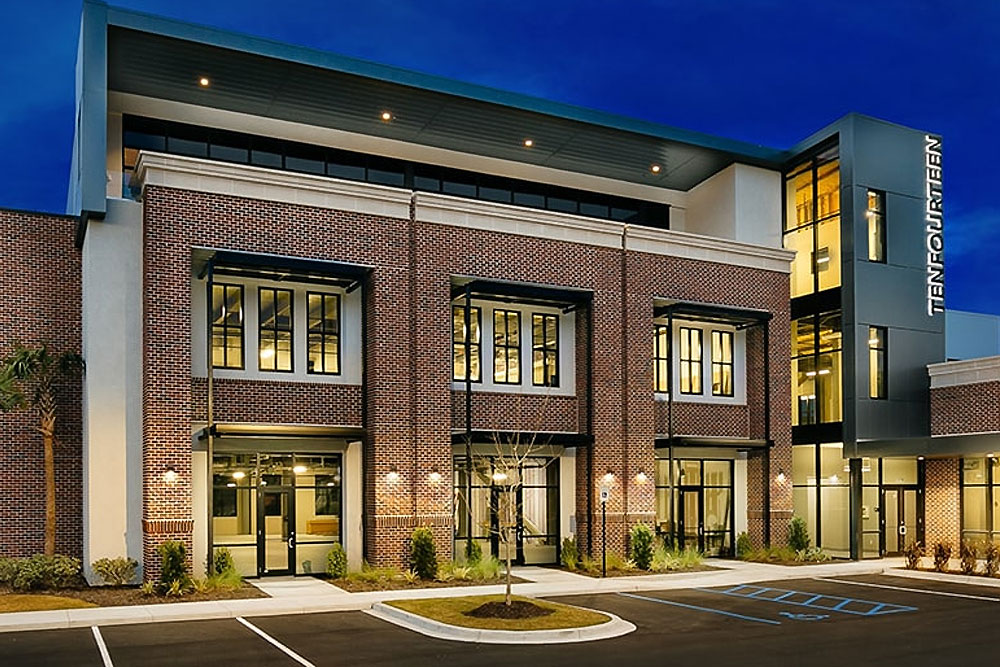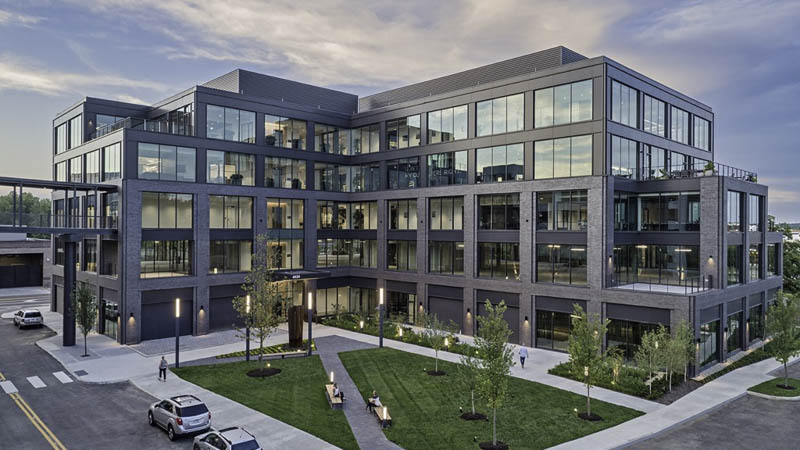The Ultimate Guide to commercial architects and Their Process
Wiki Article
Introducing the Comprehensive Providers Supplied by Commercial Architects for Modern Advancement
Commercial Architects serve an important feature in contemporary development tasks. They blend layout aesthetic appeals with performance while sticking to regulative needs. Their expertise extends beyond mere building, incorporating sustainable methods and cutting-edge modern technologies. As they browse complex zoning legislations, Architects collaborate with numerous stakeholders to bring visions to life. This complex method raises inquiries regarding the developing function of Architects fit modern-day spaces and the influence of their work with future developments.Understanding the Function of Commercial Architects in Modern Advancement
In modern city landscapes, Commercial Architects play a vital function in forming useful and aesthetic areas that fulfill diverse service demands. Their know-how prolongs beyond simple layout; they navigate complex zoning legislations, constructing codes, and ecological regulations. By working together with customers, they determine details requirements, making sure that each task lines up with the client's vision while additionally taking into consideration useful facets such as sustainability and cost-effectiveness. Commercial Architects are adept at integrating ingenious innovations and materials right into their designs, boosting both the functionality and energy efficiency of structures. They conduct complete site analyses to analyze the potential challenges and opportunities presented by a location. In addition, reliable communication with specialists and other stakeholders is vital, ensuring that the job proceeds efficiently from perception to conclusion. Ultimately, Commercial Architects are important in developing rooms that not just satisfy sensible functions however additionally add to the overall personality and vibrancy of city settings.Principle Layout: Transforming Ideas Into Reality
Concept style functions as a vital phase in Commercial design, where innovative style solutions emerge from imaginative brainstorming. This procedure counts on collective ideation, uniting varied viewpoints to improve and enhance first ideas. As ideas form, they transform from abstract concepts right into concrete building realities.Ingenious Layout Solutions
Transforming concepts into reality is the characteristic of ingenious layout solutions in Commercial style. These solutions mix creative thinking with capability, addressing the one-of-a-kind demands of modern-day advancements. By leveraging advanced modern technologies and lasting techniques, Architects craft areas that are not only aesthetically attractive however also efficient and adaptable. Emphasis on user experience drives the design procedure, making sure that atmospheres foster productivity and partnership. Each project advantages from a customized approach, where concepts are carefully developed to show the customer's vision while thinking about future trends. Innovative layout options likewise prioritize flexibility, enabling for modifications in time as company demands evolve. Ultimately, these approaches enhance the total value of Commercial rooms, making them essential in today's affordable landscape.
Collaborative Ideation Process
Collaboration functions as the backbone of the ideation process in Commercial design, promoting imagination and advancement among diverse stakeholders. Architects, customers, engineers, and neighborhood members engage in vibrant conversations, guaranteeing that all perspectives are thought about. This comprehensive strategy permits for the expedition of different style ideas, motivating special options that straighten with the job's vision. With workshops and conceptualizing sessions, concepts evolve and improve, transforming preliminary principles into tangible designs. Technology additionally plays an essential function, with tools such as Building Info Modeling (BIM) promoting real-time partnership and modifications. Inevitably, this collaborative ideation process not just enhances the design end result yet likewise cultivates a feeling of ownership and financial investment among all parties involved, resulting in effective Commercial growths.Zoning Evaluation: Browsing Laws and Conformity
As developers start on brand-new jobs, recognizing zoning policies is vital to ensuring compliance and preventing costly delays. Zoning evaluation plays an important duty in this process, as it entails reviewing neighborhood zoning legislations that dictate land use, constructing elevation, density, and problems. Commercial Architects possess the experience to browse these intricate policies, aiding customers recognize allowable usages and any type of necessary differences.Lasting Layout Practices: Structure for the Future
Sustainable design techniques are significantly necessary in the domain name of Commercial architecture, particularly as environmental issues remain to escalate. Architects focus on green materials, energy-efficient systems, and layout strategies that reduce waste and environmental effect. Incorporating renewable resource sources, such as photovoltaic panels and wind generators, allows structures to create their very own power and decrease reliance on fossil fuels.Furthermore, lasting layout stresses the value of indoor ecological quality. This includes making use of all-natural light, improving air flow, and selecting non-toxic materials to enhance resident health and wellness and efficiency. Environment-friendly roofing look at this website systems and living wall surfaces are also prominent attributes that add to biodiversity and metropolitan cooling.Additionally, Commercial Architects typically integrate water conservation techniques, like rainwater harvesting and drought-resistant landscape design. With these innovative techniques, they produce rooms that not only satisfy contemporary requirements but also promote a lasting future, resolving the expanding demand for accountable growth in the modern-day More about the author globe.Task Management: Ensuring Timely and Reliable Execution
Effective job management is essential for ensuring that Commercial architecture tasks are completed on schedule and within budget plan. This function includes a variety of obligations, consisting of the coordination of various stakeholders, timelines, and resources. Commercial Architects leverage their proficiency to create in-depth task plans that detail critical milestones and deliverables, enabling organized progress tracking.Regular interaction among employee and clients is vital, fostering openness and promoting timely decision-making. Risk monitoring strategies are additionally employed to determine possible obstacles early, enabling positive solutions to be developed. By utilizing innovative task management tools, Architects can keep an eye on project efficiency in real-time, making changes as essential to maintain efficiency.Interior Decoration: Developing Useful and Visual Areas
Inside style plays a crucial role in enhancing both functionality and aesthetics within Commercial spaces. Effective space planning can enhance process and improve customer experience, while visual style concepts add to a visually attractive environment - commercial architects. With each other, these aspects develop spaces that are not just practical but also motivatingSpace Planning Efficiency
While optimizing the utility of offered area, Commercial Architects prioritize space preparation performance to create both functional and aesthetically pleasing environments. This approach involves careful analysis of the spatial design to guarantee excellent use of every square foot. Architects consider aspects such as workflow, access, and all-natural light to improve usability. By tactically positioning furniture, devices, and workstations, they facilitate activity and interaction among individuals, advertising efficiency. Furthermore, zoning various locations for details functions assists in handling noise and privacy, creating a harmonious ambience. With reliable space planning, Commercial Architects can transform restrictions into possibilities, ensuring that each space meets the diverse demands of its passengers while adhering to regulatory needs and market requirements.Aesthetic Layout Concepts
Aesthetic design concepts play a vital role fit atmospheres that are not just useful however additionally visually enticing. These principles guide Commercial Architects in producing spaces click this link that resonate with customers while improving brand name identity. Secret aspects consist of equilibrium, proportion, and consistency, which function with each other to produce a natural look. Color pattern and products are thoroughly chosen to stimulate wanted feelings and support the general motif. Additionally, lighting plays an essential duty, affecting state of mind and exposure while highlighting building features. By incorporating these principles, Architects ensure that rooms are not only functional yet likewise inviting and inspiring. Eventually, reliable aesthetic layout promotes a positive customer experience, motivating involvement and complete satisfaction in Commercial environments.Cooperation With Stakeholders: Fostering Successful Collaborations
Successful partnerships in Commercial style depend upon effective partnership with stakeholders, making certain that every voice is listened to and valued. This collective technique includes interesting various events, consisting of customers, service providers, and area participants, throughout the style and growth procedure. By fostering open communication, Commercial Architects can attend to issues, gather understandings, and straighten the job's vision with stakeholder expectations.The assimilation of diverse viewpoints boosts creative thinking and technology, causing more useful and aesthetically pleasing layouts. Regular meetings, feedback sessions, and workshops facilitate this dialogue, allowing Architects to adjust their strategies in response to stakeholder input. In addition, establishing depend on via openness and accountability reinforces these collaborations, leading to a smoother project execution.Ultimately, the success of modern developments depends on the Architects' ability to navigate and harmonize differing passions, producing a collaborative environment that advertises common goals and mutual success.Frequently Asked Questions
How Do Commercial Architects Handle Budget Constraints During a Project?

What Sorts of Software Application Do Commercial Architects Typically Make Use Of?
Commercial Architects commonly make use of software application such as AutoCAD for composing, Revit for Building Info Modeling, SketchUp for 3D modeling, and job management tools like Microsoft Task to improve partnership and streamline workflows throughout the layout procedure.Can Commercial Architects Help With Getting Financing for Projects?
Commercial Architects can assist in obtaining funding for projects by preparing detailed proposals, assisting to express style visions, and offering economic forecasts that can enhance the chance of safeguarding needed funding from financiers or economic organizations.Just How Do Architects Ensure Safety Throughout the Building Process?
Architects guarantee safety during construction by carrying out extensive style requirements, collaborating with designers, carrying out routine site examinations, sticking to local laws, and promoting interaction amongst all stakeholders to minimize dangers and advertise a safe workplace.What Continuous Assistance Do Architects Offer After Job Completion?
After project conclusion, Architects provide ongoing assistance through upkeep assessments, performance evaluations, and design modifications. They guarantee buildings satisfy evolving demands, address potential issues, and preserve conformity with policies, cultivating a long-term connection with customers.Report this wiki page